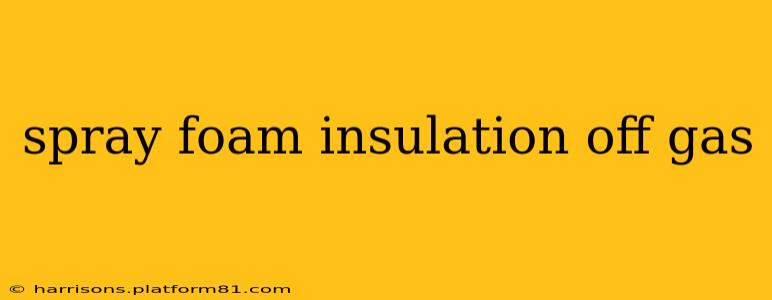Spray foam insulation has gained immense popularity due to its excellent insulating properties, air sealing capabilities, and ease of application. However, a common concern surrounding spray foam is off-gassing, the release of volatile organic compounds (VOCs) after installation. This comprehensive guide addresses this concern, exploring the types of spray foam, off-gassing effects, mitigation strategies, and answers to frequently asked questions.
What is Spray Foam Insulation Off-Gassing?
Off-gassing, also known as outgassing, refers to the release of gases from materials after their application. In the context of spray foam insulation, this involves the slow release of VOCs, such as isocyanates, diphenylmethane diisocyanate (MDI), and toluene diisocyanate (TDI), which are components of the spray foam's chemical makeup. The extent of off-gassing varies depending on the type of spray foam used and environmental factors.
What are the Different Types of Spray Foam Insulation?
Understanding the types of spray foam is crucial because their off-gassing profiles differ significantly. The two primary types are:
-
Open-cell spray foam: This type has a more porous structure, allowing for greater airflow. It's generally less expensive but has a higher VOC emission rate compared to closed-cell foam.
-
Closed-cell spray foam: This type has a denser structure with smaller air cells, resulting in a higher R-value (insulation rating) and a lower VOC emission rate. It also acts as a better vapor barrier.
What are the Potential Health Effects of Spray Foam Off-Gassing?
The VOCs released during off-gassing can trigger various health issues, especially if exposure is significant. Short-term effects can include:
- Eye, nose, and throat irritation: Burning sensations, coughing, and watery eyes.
- Headaches: Dizziness and nausea.
- Allergic reactions: Skin rashes or breathing difficulties.
Long-term effects are less well-understood but may include respiratory problems in susceptible individuals. The severity of these effects depends on the concentration of VOCs, duration of exposure, and individual sensitivity.
How Long Does Spray Foam Off-Gassing Last?
The off-gassing process is not instantaneous; it typically takes several weeks, even months, for the majority of VOCs to dissipate. However, the rate of off-gassing depends on factors such as:
- Foam type: Open-cell foam off-gasses more quickly than closed-cell foam.
- Climate: Higher temperatures and humidity can accelerate the process.
- Ventilation: Adequate ventilation helps reduce VOC concentrations.
How Can I Reduce or Prevent Spray Foam Off-Gassing?
Several strategies can help mitigate the effects of off-gassing:
- Choose low-VOC or zero-VOC spray foam: Opt for formulations with minimal VOC content.
- Ensure proper ventilation: Open windows and doors during and after installation, and utilize exhaust fans.
- Post-installation air quality testing: Consider testing air quality after installation to monitor VOC levels. This will provide peace of mind and data on the effectiveness of your mitigation steps.
- Properly trained installers: Experienced installers follow best practices to minimize VOC release.
Is Spray Foam Insulation Safe?
When installed correctly using low-VOC or zero-VOC options, and with adequate ventilation, spray foam insulation is generally considered safe. However, awareness of off-gassing and taking preventive measures is vital.
What are the benefits of using spray foam insulation?
Spray foam insulation offers numerous advantages beyond its thermal performance. These include:
- Superior air sealing: Reducing drafts and energy loss through gaps and cracks.
- Improved comfort: Providing a more consistent temperature throughout the building.
- Moisture control: Acting as a vapor barrier to prevent moisture damage.
- Noise reduction: Minimizing outside noise infiltration.
While off-gassing is a valid concern, its impact can be minimized with careful selection of materials and installation practices. Weighing the potential benefits against the risks, along with taking appropriate precautions, will help in making informed decisions about spray foam insulation.
